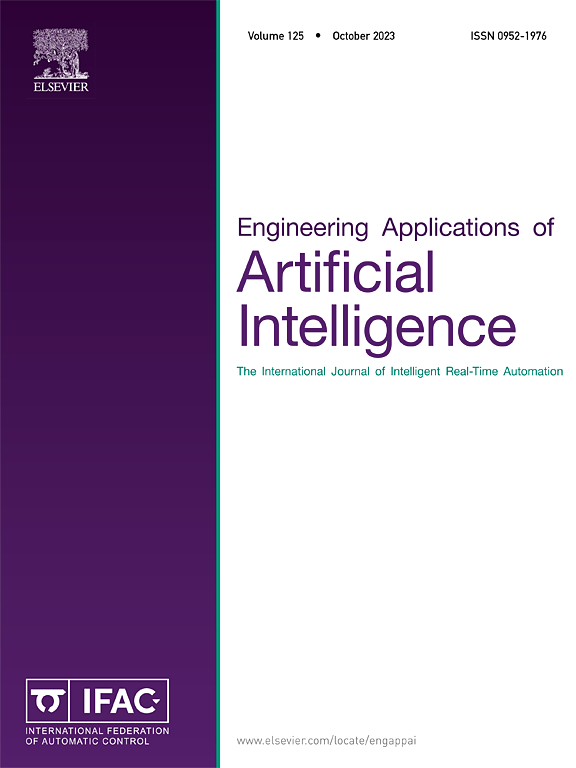A rolling bearing fault diagnosis framework under variable working conditions considers dynamic feature extraction
IF 7.5
2区 计算机科学
Q1 AUTOMATION & CONTROL SYSTEMS
Engineering Applications of Artificial Intelligence
Pub Date : 2025-02-19
DOI:10.1016/j.engappai.2025.110255
引用次数: 0
Abstract
As a key component in industrial machinery, rolling bearings usually operate at variable speeds. The features in the signal are dynamic due to speed changes, with complementarity and correlation embedded in the different features. However, the utilization of this complementarity and correlation in mining dynamic signal features has been neglected, leading to reduced accuracy of fault classification models and less adaptability to variable working conditions. To address this problem, a multi-scale asymmetric feature reproduction plots-shifted window transformer (MAFRP-ST) framework of rolling bearing fault diagnosis is proposed under variable speed conditions in this study. Specifically, the framework includes dynamic feature capture and dynamic feature learning modules. The dynamic feature capture module is designed to convert signals into multi-scale asymmetric feature reproduction plots (MAFRP) containing features in the time–frequency domain, allowing the deeper dynamic features to be better captured by exploiting the complementarities and correlation. In the dynamic feature learning module, a shifted window (Swin) transformer adapted to dynamic features at different scales is developed, calculating local attention according to the window size in each layer and incrementally increasing the receptive field layer by layer. Compared with recently proposed similar methods, the MAFRP-ST framework improves diagnosis accuracy by about 4.1% and 2.2% on average across two datasets, respectively, and better robustness to noise is demonstrated.
求助全文
约1分钟内获得全文
求助全文
来源期刊

Engineering Applications of Artificial Intelligence
工程技术-工程:电子与电气
CiteScore
9.60
自引率
10.00%
发文量
505
审稿时长
68 days
期刊介绍:
Artificial Intelligence (AI) is pivotal in driving the fourth industrial revolution, witnessing remarkable advancements across various machine learning methodologies. AI techniques have become indispensable tools for practicing engineers, enabling them to tackle previously insurmountable challenges. Engineering Applications of Artificial Intelligence serves as a global platform for the swift dissemination of research elucidating the practical application of AI methods across all engineering disciplines. Submitted papers are expected to present novel aspects of AI utilized in real-world engineering applications, validated using publicly available datasets to ensure the replicability of research outcomes. Join us in exploring the transformative potential of AI in engineering.
 求助内容:
求助内容: 应助结果提醒方式:
应助结果提醒方式:


